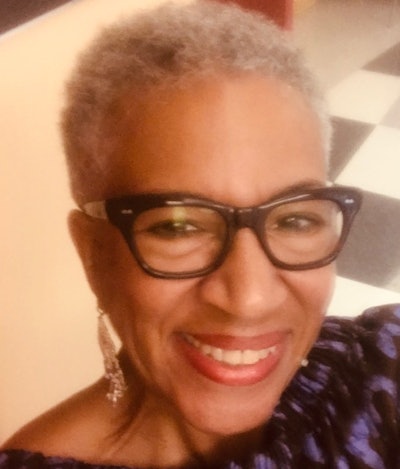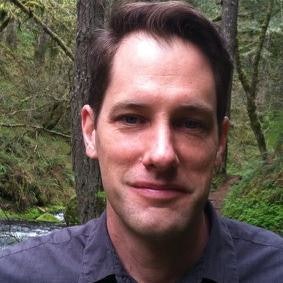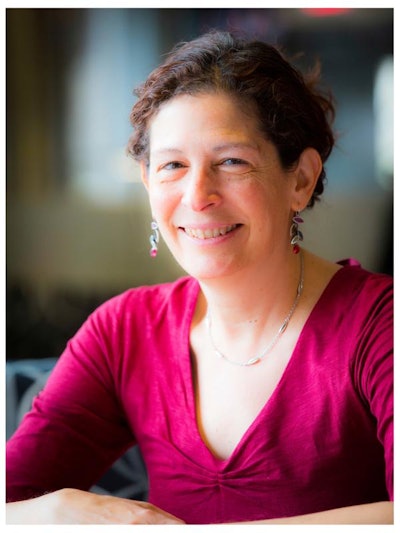Robert “Bob” Hartmann was born in 1935 on Long Island. He was ten years old when World War II ended. He lived through the assassinations of Malcolm X, Dr. Martin Luther King Jr., President John F. Kennedy, and Robert F. Kennedy. He served in the U.S. Army between Korea and Vietnam, and after he retired, he co-founded a learning group for retirees. He was walking downtown to rehearse a play with his fellow adult learners, a path he had taken many times. When he reached the corner of North Moore and Hudson in New York City, he stopped, looked up, and saw smoke pouring out of the north tower of the World Trade Center.
It was just after 9 a.m. on the morning of September 11, 2001.
With his long view of history, Hartmann remembered that, in 1945, a small plane flew into the Empire State Building by mistake. It was the first thing he thought of as he stood there, watching the fire burn hundreds of feet in the air.
“The thing that scared me so badly,” he said, “I could see these dots coming out of the window. At first, I thought they were throwing things out. And then I realized, these are people jumping.”
Across the Hudson river, Dr. Steven Notley watched the north tower burn on his way to work at Nyack College’s downtown branch. He called his wife on a pay phone, and told her he was alright. She asked him, “What are you talking about?”
“Turn on the TV,” he replied.
Just before getting onto the train for work, he watched the second plane hit.
In Manhattan, Darryl Warner, who taught at the college of dentistry before joining the medical school staff at City College of New York, watched the second impact from his office window.
“I saw the building on fire, and then I see what looks like a big bird,” said Warner. “And then the second building exploded.”
For so many, the confusion of the morning was resolved when the second plane hit. Suddenly, New Yorkers knew that this was no accident. On the street down below, people began to run.
Warner relied on his training to dictate his next moment. He set about the work he knew he needed to do. He heard students screaming outside in the halls. He went to comfort them. He then walked down the block to Bellevue Hospital and volunteered his services, because he knew he was needed.
“We waited for the first shipment of bodies to come in. We unloaded the cadavers and put them onto different trailers. First, everyone was in one. Then there was one just for firemen, one for police officers, one for civilians,” he said.
That day was the first of what became eight long months of working at the pile, the nickname for the mess of dust, debris, and steel at ground zero. Warner worked to identify human remains in the effort to return them to those who loved them.
 Deborah Edwards-Anderson
Deborah Edwards-Anderson
The impact of the day — the confusion, the terror, the shock, and the grief — reverberated across every aspect of American life. For those who worked in higher education in the city, many of whom had offices and classrooms within walking distance of ground zero, the day they survived has now become a moment of history to their students, a moment that must be taught, ideally with lessons to learn. Twenty years on, the country is still processing the tragedy, the dichotomy between the unification and comradery at ground zero, and the fear and hatred that was projected onto so many people.
Dr. James Milke, a professor of engineering at the University of Maryland, came to ground zero to study what had gone wrong structurally in the towers. After all, they withstood their first bombing in 1993. On that day, it took eight hours for the two towers’ entire population to be evacuated. On September 11, it took the south tower less than two hours to fall.
“I can remember being near where the south tower was,” said Milke on when he first visited the World Trade Center site as a core member of the FEMA team to investigate what happened. “I took a step back and realized that I’m standing on this mound of dirt and dust and debris, and I realized that I was standing about 3 stories up in the air. The enormity of what was there. There wasn’t really much that was recognizable of what was inside the buildings, it was just dust.”
The result of his studies at ground zero, he said, “was that we find that we should be treating very tall buildings differently than an 8 story or 100 story high rise. Prior to 9/11, there wasn’t much of a distinction made as to a low high rise and a very tall building like the twin towers.”
So construction of these buildings has now changed, something that perhaps gave New York a leg up as the years continued. Dr. Greg Smithsimon, a professor of sociology at Brooklyn College and author of the book September 12, said, “What 9/11 did locally is that it began normalizing everyday preparations for absolutely extreme events.”
 Dr. Greg Smithsimon
Dr. Greg Smithsimon
In his classroom after 9/11, Smithsimon found a multitude of different reactions.
“I remember one student saying, ‘Now I go to the corner store, and I see the Arab guy across the counter and I’m saying, I got my eye on you!’” said Smithsimon. “This is a guy that had experienced racism, and he was thrilled to jump on the bandwagon and interrogate a visibly Muslim man in the city.”
“You always knew you were teaching for a diverse classroom, but it brought home in a personal and hard-hitting way that you had to be able to teach to a broad array of students,” said Smithsimon. “You have this event that pitched students into an immediate set of questions as to how to engage with the world.”
Dr. Mark Feldstein, a journalism professor at the University of Maryland, said that, immediately after 9/11, students “talked about the sort of groundswell of patriotism that characterized the news coverage — the network tv anchors wearing flag lapels, unquestioning acceptance of all of the steps that the Bush administration was taking, including invading Iraq — using “us” — that mattered a lot. Now I’m teaching students who were born after 9/11, so it’s not as salient.”
Deborah Edwards-Anderson was in New York on September 11. She worked at City College of New York, a place as important to her adulthood as her childhood. Her father went to City College and she grew up hearing about how much he loved his time there.
“In the past, many instructors focused so much more on what they were teaching, and now there’s a lot more emphasis on the how,” she said. “You can have the most, present the most brilliant lecture, the most intellectually scintillating content, but if you're not sensitive to bringing your students into conversation with that material and each other, what are they leaving with? The growing sensibility is that, what we’re doing in the classroom is as much about engaging with each other as citizens, how to be with each other, as much as what is the particular content of the class.”
Edwards-Anderson said she learned a lot from that day about grief that would prepare her for coming crises like the pandemic and the murder of George Floyd. She said she learned how to put her oxygen-mask on first, and it made all the difference.
“There’s much more compassion for others,” she said. “And the ethos of, you gotta go-go-go, produce-produce-produce, grind-grind-grind, we don’t do that. That’s been a product of the learning.”
 Dr. Thea Abu El-Haj, education professor at Barnard College
Dr. Thea Abu El-Haj, education professor at Barnard College
“I had a seven-year-old and a three-year-old at the time, so we had to figure out how to talk to our seven-year-old about what happened, about this heartfelt tragedy for so many thousands of people. And I had to talk to her about what she was likely to hear about Muslims and Arabs,” she said.
Abu El-Haj’s research includes how young Palestinian Americans have navigated K-12 schooling in a post-9/11 world.
“I tell that story [of my daughter] because 9/11 often gets treated as a watershed moment where anti-Muslim and anti-Arab racism begins. It didn’t start then. These tropes were already happening,” said Abu El-Haj, referring to stereotypes of Arab and Muslim men as violent and women as oppressed. “I think what’s important for us to understand is how this tragedy sits with what came before and after it.”
Abu El-Haj noticed soon after the attacks that an openness to critiquing the government shrank rapidly.
“In one of the first talks that Bush gave after 9/11, he said either you’re with us or you’re with the terrorists,” said Abu El-Haj. “I think about that as this shutdown of any possibility for critical debate. Because if you were critical of the policies of the U.S. government in any way, then suddenly you were aligned with supporting terrorism. Those do not have to be the only options here. For young Muslims and Arabs in the U.S. especially, that left very little space to make sense of things.”
With the fighting in Afghanistan as well as the invasion of Iraq as part of a larger War on Terror, Abu El-Haj points out that Arab and Muslim immigrants have been grappling with a sense of conditional American citizenship.
Journalists and historians add that access to government information shut down along with public critique in the aftermath of 9/11.
“No one had ever criminally prosecuted leakers of government information before, that has become a permanent feature now of this national security state that we live in even as we pull back from the wars,” said Feldstein. “That’s a terrible thing not just for journalists but the public because they’re not learning what the government is doing.”
Professor Rafael Lorente, who also teaches at the University of Maryland’s College of Journalism, said educating today’s students about 9/11 is all the more important because undergraduates especially do not remember that day.
“As educators, it’s important that we talk to these students about what 9/11 meant and what our reaction to it meant,” said Lorente, drawing attention as well to the recent withdrawal of troops in Afghanistan as the U.S. ends its longest-ever war. “If the goal of Al Qaeda was to have the U.S. stomp all over the world and tick off a lot of people, then we kind of did that, for good and for bad.”
Lorente was a reporter on 9/11 and had been teaching an 8 a.m. reporting and writing class when a colleague knocked on his classroom door, telling him he may want to take the day off. He drove into D.C. to cover what happened.
“In our media law and reporting classes, we can teach them that before 9/11, we had a lot more access to state and national information that was shut down after what happened for purported national security reasons,” said Lucy Dalglish, dean of the University of Maryland’s Philip Merrill College of Journalism.
Feldstein agrees with keeping that bigger picture of 9/11’s significance in mind in the classroom and on campuses.
“It’s just not at the forefront of public consciousness anymore, and I think that’s unfortunate,” he said. “Because what’s important is not just what happened to those on 9/11, to the victims and the families, but what happened to this country since 9/11, this sort of permanent national security state, the domestic surveillance, the infringement on civil liberties. As a country, we have not fully come to terms with the legacy of 9/11 and how that changed us.”
To Abu El-Haj, higher education’s push toward greater diversity, equity, and inclusion plays a key role today in helping students understand not only 9/11 but what led up to the attacks and their legacy.
“I think it’s important to broaden the conversations about anti-racism on campuses to understand racism directed at Muslim communities. They’re often left out of conversations about diversity, equity, and inclusion,” said Abu El-Haj. “The damage of racialization is not only contained within the boundaries of the U.S. It is transnational.”
Dr. Vincent Boudreau, president of the City College of New York (CCNY), shared that the large immigrant student population on campus has shaped his views not only on 9/11 and its aftermath but on making sense of the 20th anniversary of the tragedy in light of the pandemic today.
CCNY is offering community members grief workshops during the pandemic to process the ongoing toll of COVID-19. Boudreau said reflecting on 9/11 in the midst of the pandemic is challenging as well as especially poignant.
“It feels difficult to draw a line around one of these grief workshops because there are all kinds of ways that grief and trauma are transmitted — across generations, across time,” said Boudreau. “Our community is probably more traumatized by the backlash following 9/11 than 9/11 itself. I suspect that many see a continuity between the reasons for grief in 9/11 and today in the last few months with the pandemic.”
Notley, a religion professor at Nyack College who watched the planes hit, also saw the strong connections between the pandemic and the attacks.
“20 years ago today, people were afraid of terrorism. Now people are afraid of COVID,” said Notley. “How do you grapple with these issues in our lives that we have no control over? What is going to be our response to it? There is not a right way or a wrong way, but how do you make sense of it?”
To him like many who were there that day, there are larger lessons to be learned and passed along to the next generation of students.
“It’s out of a lack of understanding that bigotry grows, intolerance grows, and that fosters violent reactions. I’m not trying to justify violent reactions but trying to understand what brings a person to that place so we can grapple with those causes,” said Notley, referring not only to 9/11 but to the fears during the pandemic. “This isn’t just a history lesson. There are things that we can gain in how we live our lives today and how we relate to each other.”
Rebecca Kelliher can be reached at rkelliher@diverseeducation. Liann Herder can be reached at [email protected]


















